* (restored)
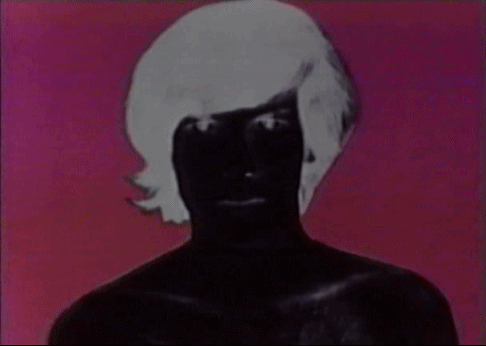
‘The radical and highly stylized work of American filmmaker Paul Jeffrey Sharits (1943-1993) forever changed the landscape of filmmaking and art, and continues to reverberate within the history of cinema. Driven by what he described as “inescapable anxiety,” Sharits was extremely prolific throughout the 60s and 70s. His films exploded the conventions of both narrative and experimental cinema at the time and were a complete departure from what other “structural” filmmakers, such as Peter Kubelka and Tony Conrad, were making at that time. Perhaps some of the most powerful films ever made, Sharits’ mandala films of the 60s—such as the highly charged Piece Mandala/End War, T,O,U,C,H,I,N,G and Razor Blades—all used the flicker technique to violently alternate between pure color film frames with sexually explicit and sometimes crude still images. Trained as a painter and graphic designer, Sharits “drew” his films first with colored ink on graph paper, as blueprints for the completed films, and then proceeded to meticulously compose them frame-by-frame like musical notes. Stripping the elements of narrative cinema—illusion and imitation—from his work, Sharits instead highlights the materiality of film while focusing on a complete exploration of the film frame. A goal of Sharits’ films was to obliterate the viewer’s perceptions by using flickering light, stark imagery and repetitive sound to deeply penetrate the “retinal screens” and psyches of the audience members, creating a powerful, profoundly visceral and participatory experience.
‘Paul Sharits grew up in Denver and attended the same high school that filmmakers Larry Jordan and Stan Brakhage did ten years prior. He eventually enrolled at the University of Denver to study painting, drawing and sculpture. Becoming close friends with Brakhage, Sharits founded two student cinema clubs, screening work by filmmakers like Maya Deren and Kenneth Anger. Echoing the New American Cinema ethos, the films Sharits made during this time were narrative driven with actors and featured themes exploring sexuality, alienation and isolation.
‘Sharits’ mother committed suicide in 1965, forever altering his life and film work. This was also around the time his son Christopher was born, and both events marked a distinct turning point in his ideological way of working. From that moment forward, Sharits attempted to burn all of his early narrative-style works, mistakenly missing one film, Wintercourse, which fortunately survives as the sole example from that period. Also central to Sharits’ ideological shift in filmmaking was Kandinsky’s 1911 book, Concerning the Spiritual in Art, which helped guide and shape Sharits’ ideas of the “psychic effect” of using colors and the call for a “spiritual revolution” of artists to express their own inner lives abstractly.
‘In the early 1970s, Sharits was invited by Gerald O’Grady to teach film at the Media Study of Buffalo, a position he would hold for twenty years within a dynamic community of filmmakers that included Hollis Frampton and Tony Conrad. During this period, Sharits began working on gallery installations or, as he called them, “locations.” The extremely intricate and detailed locational works primarily featured multiple 16mm projectors of looped films, highlighting and showcasing the projector like a sculpture in the middle of the gallery. This allowed Sharits to explore and expand the durational aspects of his work in ways not possible theatrically, the loops extending the length of the films to durations Sharits could previously only imagine. Concurrently, Sharits worked on his Frozen Film Frames, a series of works in which strips of film are “frozen” in time and place, suspended between panes of Plexiglas and hung in the gallery to be studied like a painting.
‘For Sharits, the 1980s began with the death of his brother Greg; he was killed charging the police with a gun in his hand. Already battling the effects of severe bipolar disorder, Paul was devastated and never fully recovered from the tragedy. Throughout the decade, Sharits would complete several films and locational works, but spent the majority of his time painting, a preferred medium he had temporarily abandoned. Indicative of his tortured mental state at the time, his paintings concentrated on medical pathology, disease and decay. Sharits’ interest in the themes of his painting manifested themselves internally as well, as his body began to break down owing to a series of bizarre incidents that included being stabbed in the back and shot in the stomach.
‘In 1987, Sharits would make his first and only completed video and his final motion picture, entitled Rapture, a quasi music video employing early video technology, complete with scenes of Sharits writhing on the ground in a hospital gown. Six years later, on the weekend of his favorite holiday, the Fourth of July, Paul Sharits ended his life. His work lives on and in many ways is more popular than ever through the efforts of Christopher Sharits and the Paul Sharits Estate, as well as the ongoing work of Anthology Film Archives, whose staff is in the process of preserving his entire filmography, making it available to future generations.’ — Jeremy Rossen
___
Stills
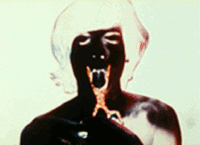
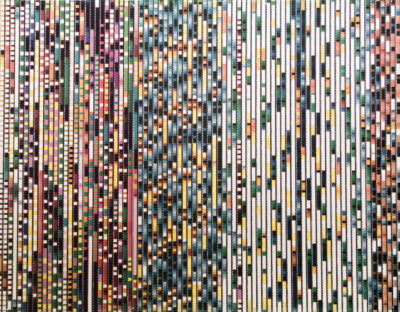



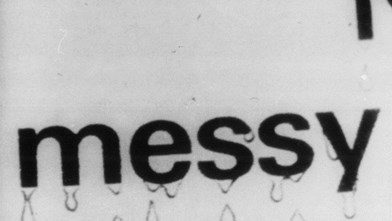

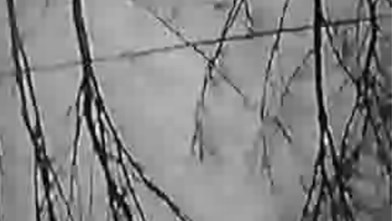





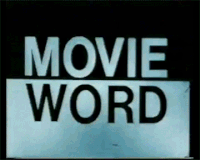
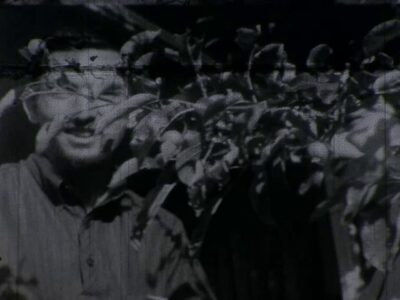
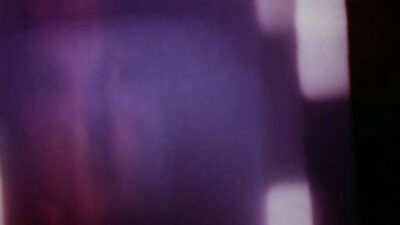
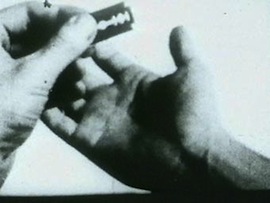



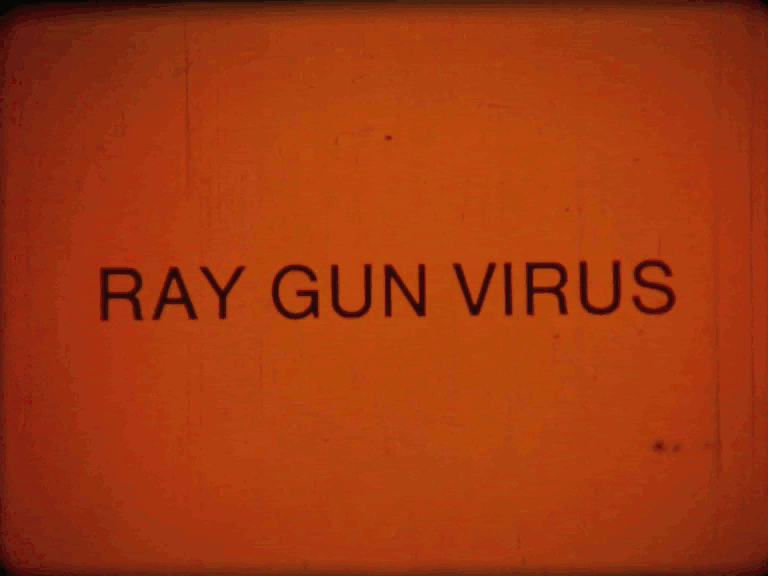
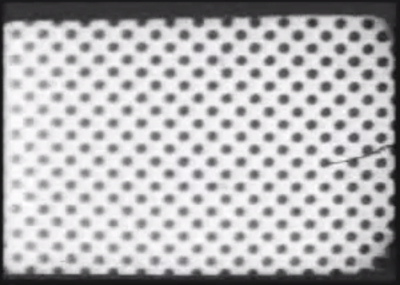


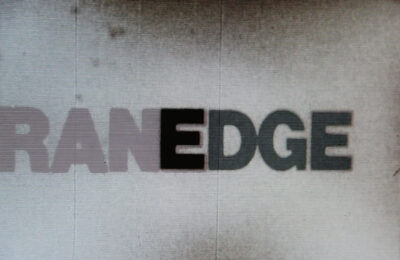


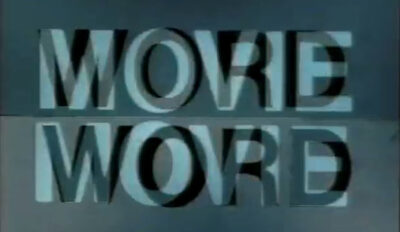




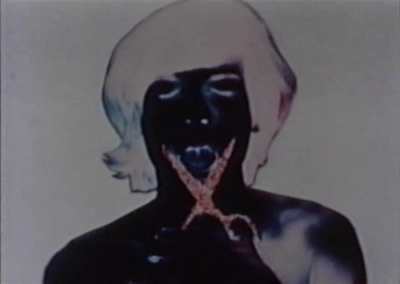
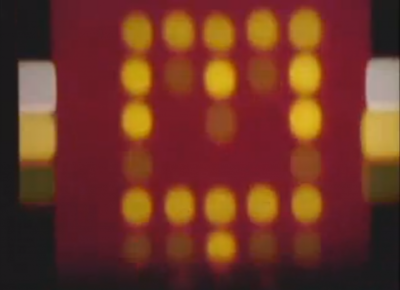


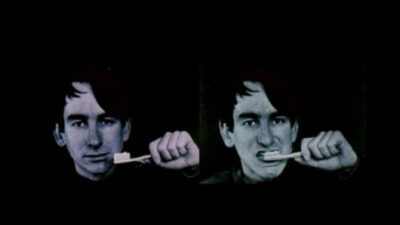

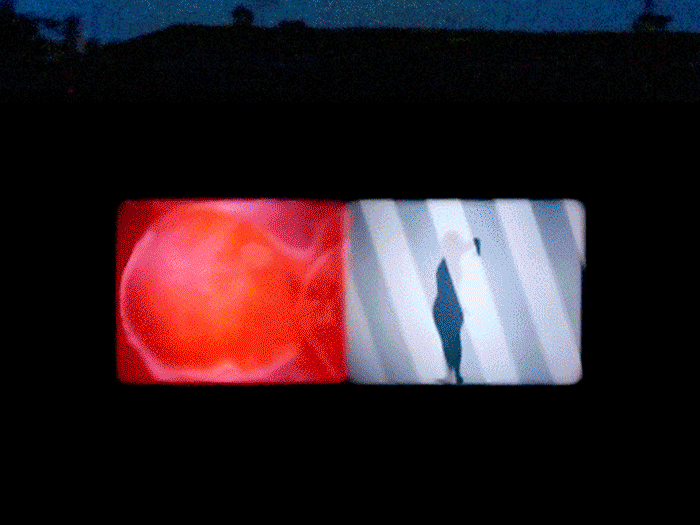

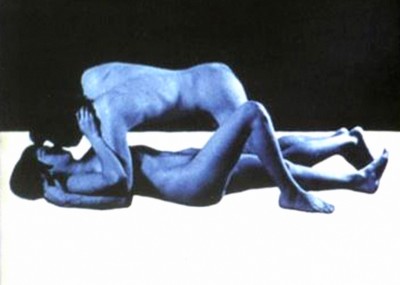

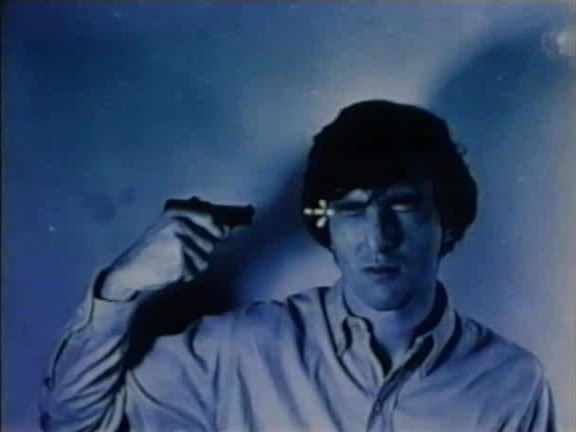
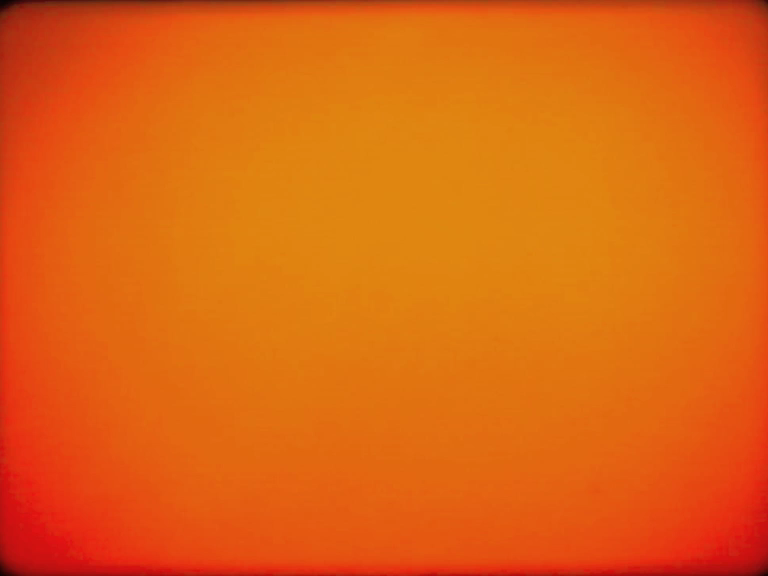
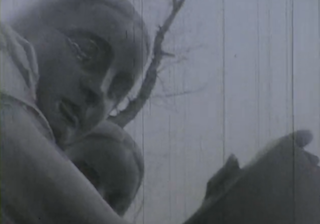


____
Further
_____
Extras
Trailer: PAUL SHARITS, a documentary film by François Miron
Paul Sharits – Mandala Films – trailer
Paul Sharits / Entretien avec Yann Beauvais
Paul Sharits (1981) by Gérard Courant
_______
Interview

John Du Cane: Could you talk about your beginnings in painting and how that led you to an interest in film?
Paul Sharits: Actually the work didn’t originate from painting, in fact before I was interested in art at all, I was making films strictly for the pleasure of making them. I destroyed all those early works. When I was in high school I was pretty anti-social and had not begun to think seriously or critically. I felt that society didn’t merit intellectual consideration and I was making films that were very much involved with my own adolescent sexual feelings. Like most of the early psychodramatic works of the 50s, they were about sexual neuroses. We made them in 8mm with my friend’s parent’s camera. When I began studying painting and sculpture I just kept making films, though I didn’t want to study film. It was at the end of abstract expressionism when it was a sin to do figurative work. I felt that this is the kind of work I’ll do in my films so I don’t have to be evaluated on it. This is strictly my own conception, my own development, and it really didn’t bother me that it was just a past time.
Eventually it become more engaging and I was very surprised that theories I had developed about a sort of ‘haiku’ narrative film structure were very similar, theoretically, to Eisenstein’s montage. At first I was quite depressed, because I thought I’d figured out this thing that I never saw in regular movies, and then I found it in Eisenstein.
In graduate school at Indiana University I was making films, but not studying them. I didn’t think there was any place where it would be valuable to study film. Henry Smith encouraged me in photography, and I quickly learned its technical aspects. He said why don’t you go ahead and make films and I’ll give you credits. He was always very helpful to me and allowed me to devote a lot of time to my work and even helped a little with financing. I found directing a bore as it was not the thing I wanted to do with film. I started fragmenting my narratives to such an extent that I felt that this was the subject matter. The way I was editing/thinking made the acting and drama increasingly extraneous. There was little sense of beginnings or ends, everything overlapped, and I suppose many of my ideas were informed by my studies in the visual arts. But all along I felt I wasn’t going to apply theories and ideas from painting to film. You can’t apply the principals of painting to a medium that’s not painting. I was very much against abstract film and I remain uninterested in the traditional abstract film.
John Du Cane: When you say abstract film, which filmmakers are you really talking about?
Paul Sharits: I’m thinking about the early avant-garde European movement, for instance, the films that were influenced by Constructivism. It’s not that I dislike them, I just don’t think they’re theoretically viable. Maya Deren also attempted to point this out. I think most people are somewhat aware of this. In any event my own work… I didn’t want the work I was doing in painting to directly inform my work in film. I was going to keep my film work off to the side so that it was completely free of any teaching. Well, I was getting ideas from all kinds of things, but they were my own synthesis, not pre-formulated conceptions of what film should be. I think it would be very bad for a serious filmmaker to go to a school and learn technique with the idea that after he learns the technique he will then have the tools to create intelligent, technically adequate forms. This seems silly to me; one doesn’t study sculpture by going through four years of woodworking. The attitudes those schools imbed subvert personal growth. Even if it’s not openly done, simply the training in what is right and wrong prevents one from seeing certain things through one’s own vision. Very few people survive this, even if their intentions are good. It’s like acquiring a lot of knowledge that you just have to suppress… I feel.
John Du Cane: How did you come to make Razor Blades?
Paul Sharits: No, first there was Ray Gun Virus, which I don’t believe has been shown here at all. That film, I think, is the most radical film, if not the most accomplished. It was a break for me because the only subject matter was the film grain and the structuring of colour in time. The soundtrack is the continuous sound of the actual sprockets of the film. This is where I became…
I suppose it is true that I made an abrupt cut, the look of the work radically changed. I was very apprehensive about this, but I felt like I was coming very close to having a breakdown, so I tried to see through my own preconceptions at that particular time and that led me to try to eliminate absolutely everything and start from the most basic elements. I think I overlooked many of the basic elements, and I did not have a very sophisticated conception of how to approach this, but I was very conscious that I was eliminating a great deal. At that time I wrote on the way Godard was using colour in some of his early work. This was the sort of thing I wanted to do using a very pure form. I was still thinking in dramatic terms, in the sense that I felt the basic system, the machinery, could be compelling drama. I feel that I ‘m going through another big transition at this point in that I realize more and more that that is a conception I must break through. I must allow myself to negate this desire to make anything with dramatic qualities. So that I will be able to perceive from a new base again. This is why I no longer did any mandala-structured works after T,O,U,C,H,I,N,G. T,O,U,C,H,I,N,G is the end of my involvement with worrying about, or thinking about, films that should have some appeal to the cruder emotions. I want a cinema that is more distant from the whole theatric tradition. Even though film has been stripped down to changes in colour, the impulse remains to make something dramatic, it’s still being influenced by theatre. I made Ray Gun Virus and then became interested in using things I’d discovered with colour and this brought about a synthesis with my interest in Tibetan mysticism and my own experiments with Yoga meditation and to some extent an interest in drug experiences to make a meditative kind of cinema. This is not the normative idea of something being dramatic, but I see it as drama now, I see it as a stage. T,O,U,C,H,I,N,G was a dramatic film. I could go on making more dramatic films, I’ve learned enough about how to structure it that way, but I simply don’t want to. I think that it’s a quality that has to be negated to get to other levels.
John Du Cane: You feel you were using dramatic imagery?
Paul Sharits: Besides the imagery, the rhythms are dramatic, though they might seem mathematical, even geometric. I know that I could evoke certain sorts of feelings without images, simply with the rhythm of the film. One could conceivably do a film that would leave people weeping via some variation on the black film form.
John Du Cane: It strikes me that something like T,O,U,C,H,I,N,G, besides being meditative, is also an exorcism.
Paul Sharits: Yes, yes. At that time I believed that film could be a lovely, magical object, a charmed experience. This is very personal, but I don’t particularly wish to do that any longer. I may change my mind some day but now there’s a big break.
With Ray Gun Virus I had imagined a form that had no end or beginning. I was thinking of a very long film with reels that could be played in any order. It wouldn’t show progression or development. There would be no overall shape to the film. None at all. Any part would be as appropriate as any other part.
Of course that’s not the same kind of drama that is involved in the mandala films. My intentions… you see there are so many things operating… we are talking about the idea of the mandala and the irony of structuring a film like that, that tries to put a centre in the film, which at once cancels the possibility of that film doing what a mandala does. Formally, to have a complete mandala in film, is to negate the possibility of an extended, meditative experience. Defining the overall shape negates the possibility of a true meditational experience; it’s a fragment of the meditative experience.
John Du Cane: I think there seems to be a conflict in your desire to remove meaning from your films, at the same time that there is, let’s not say an obsession, but a great concern with death, which is probably one of the reasons why your films remain dramatic.
Paul Sharits: I don’t think many of us in Western culture are trained properly in seeing or responding to our eventual death. I’ve been struggling with this – to see life as a series of deaths and births. I think the body of work I’ve made struggles to present myself with certain questions on a formal level about death. I think it’s interesting that I’m doing it with a dying medium, as I think cinema is, in the form that we’re working in, technically obsolete, and will eventually be looked upon as quaint gizmos. But I love them, they have many interesting aspects that I’m just beginning to recognize. At first one thinks that a machine cannot be simply the delivery system for a process. The idea is that these machines have to serve us, they need to be used for something. To use them simply to amplify their own nature is not often thought interesting. Dadaists like Picabia made jokes about machines and the idea of machines. But I’m more interested in the Russian Constructivist reaction to the Industrial Age than the negative Dadaist reaction.
John Du Cane: I think one thing that you are obviously developing is a completely different sense of humour which ties in with your feeling for paradox. This humour might have been lacking a little in your earlier work, perhaps this absence didn’t allow you to have such a balanced understanding of the oppositions you were working with in your films.
Paul Sharits: I have so many different moods. Sometimes I think about my things in a very serious manner. At other times I think it’s so absurd I just laugh. Sometimes I laugh when I see T,O,U,C,H,I,N,G because I think it’s very funny. But other times I feel a great horror. Sometimes I feel completely detached and just observe it.
John Du Cane: Could you talk about the oppositions you worked with in those films, in terms of the sound, colour and rhythms?
Paul Sharits: The whole aesthetic was an attempt to synthesize opposites. Or not so much a synthesis but a plausible co-existence of opposites. No, not even opposites, but whatever lies beyond the opposites of irony, paradox and conflict. I just try to do whatever I feel is necessary.
John Du Cane: So the theory develops in the making?
Paul Sharits: Sometimes everything seems theoretically very clear and other times it seems hopelessly complex and confused. I don’t mind contradicting myself; I think I probably contradict myself quite frequently. This is directly relevant to the kind of things I’ve been working with in my film. My life is very confused; so part of my struggle with these films was to find ways that made these things coherent to me. Intercutting positive and negative footage is an obvious way of dealing with dualities, for instance, or having opposing vectors in the temporal shape of the film.
Simon Field: Was that the reason for using two screens in Razor Blades?
Paul Sharits: Yes, I wanted a dialogue that would begin in Razor Blades with a harmonious relation until gradually more non-relational syntax (and symbology) were introduced. It gradually introduces various levels of meaning in the structure and in the referential qualities, then returns to a more related dialogue. But the dialogue is altered because of the previous changes. I’m not sure whether people experience the film this way or not. My idea is that these images slash at each other.
Simon Field: And the same holds true for the stereo sound?
Paul Sharits: Yes, one track is exactly inverse to the other track.
John Du Cane: Could you talk about the importance of seeing movies as a procession of discrete events appearing 24 frames per second, comprised of single frames with pauses between each frame?
Paul Sharits: If you see a movie there is an illusion – it’s not an illusion, it’s a physiological event in your nervous system – that you’re seeing a continuous light. But in fact the light is not on screen all the time. The soundtrack is different, because the sound is not interrupted by a shutter. The sound is continuous. So the sound can act in a way that the image cannot; the image cannot be on the screen continually. But the sound can be continual and mark out segments of time very exactingly, by emphasizing each frame, for instance.
________
14 of Paul Sharits’s 32 films
_________
Wintercourse (1962)
‘Until the mid-1980s, Paul Sharits thought he had destroyed ‘Wintercourse’; one of his earliest works, rendered while at University studying where to put the brush on the canvas. Fortunately, he did not. If it’s nothing else, ‘Wintercourse’ is a beautifully disoriented work of fundamentally representational cinema; at best marginally of a piece with his later ‘flicker’ creations (which remain stunning works, regardless of how theory-driven they might have been). Think of it as a trip through the day, but with all the coherent, recognizable moments discarded. As much as any work of so-called ‘experimental’ film (a debased term, I grant you), ‘Wintercourse’ suggests — indeed, makes a credible case — that the only temporal world worthy of our awareness is that which the eye records just before the mind comprehends.’ — Tom Sutpen
the entire film
_____________
Unrolling Event (1965)
‘Toilet paper event, single frame exposures.’
the entire film
_____________
Word Movie (1966)
‘Word Movie depicts the ability of film editing to change and shape the meaning of individual images and sounds—which was the main idea of Sergei Eisenstein’s theory of montage. Much like Hollis Frampton’s Nostalgia, Word Movie examines asynchrony between sound and images (while Chris Marker’s La Jetee did the opposite). And just like Hollis Frampton did in Carrots and Peas, Paul Sharits’ further distorts the linearity of sound in order to examine how the relationship between the individual elements creates and shapes the meaning of a sequence. In Word Movie, a man and a woman’s voice alternate speaking one word each. They seem to not make any sense whatsoever, and neither do the fast-changing words on screen which are not directly related to what the voices are speaking. When listened to individually, both the man’s and the woman’s voice have a logical connection. However, the logical connection is lost because their voices are alternating and hard to follow.’ — filmsie
the entire film
____________
Ray Gun Virus (1966)
‘Although affirming projector, projection beam, screen, emulsion, film frame structure, etc., this is not an “abstract film”/projector as pistol/time-colored pills/yes=no/mental suicide and then, rebirth as self-projection. “… just colors and strobe … ‘light-color energy patterns (analogies of neural transmission systems) generate internal color-time shape and allow the viewer to become aware of the electrical-chemical functionings of his own nervous system’ … It’s true.”‘ — David Curtis
Excerpt
_____________
Piece Mandala/End War (1966)
‘Blank color frequencies space out and optically feed into black and white images of one lovemaking act which is seen simultaneously from both sides of its space and both ends of its time.’ — canyoncinema.com
the entire film
_____________
Dots 1 & 2 (1966)
’35 sec, b&w, silent’
the entire film
_____________
N:O:T:H:I:N:G (1968)
‘The screen, illuminated by Paul Sharits’ N:O:T:H:I:N:G, seems to assume a spherical shape, at times – due, I think, to a pearl-like quality of light his flash-frames create … a baroque pearl, one might say – wondrous! … One of the most beautiful films I’ve seen.’ — Stan Brakhage
Excerpt
______________
Razor Blades (1965-68)
‘Razor Blades follows the tradition of the stroboscopic films which affect our eyes on a physical level, causing an almost hypnotic transference of light from the screen of our minds. However, Sharits explores psychological as well as physical sensations. He seems intent upon going against the grain of our perception and feelings, and we are forced to either stop the flow of images or to dive into them fully with total abandon. If we can do this we find the film deeply satisfying, because it is conceived to break down our defences and then to work on a subconscious level to initiate us into a new level of awareness. By opposing the eyes and ears against the mind, Razor Blades cuts deeply, both in our psychic and visceral bodies, and is a forerunner of what films some day may become – totally programmed visual, auditory and psychological environments.’ — David Beinstock, Whitney Museum
Excerpt
____________
T,O,U,C,H,I,N,G (1968)
‘There are moments in cinematic art when the narrative of the film is subjectively implied and subsequently written by the viewer. while this is common to most structural and lyrical films in the experimental genre, none hits louder than T,O,U,C,H,I,N,G,. an angry and demonic piece that simultaneously lulls you into awareness and hypnotizes you into an emotive overload.’ — Pierre Aubert
the entire film
______________
Shutter Interface (1975)
‘The four film projections of Shutter Interface combine to produce a mural-like installation of seven overlapping monochromatic rectangles. The rotating shutter system, which traditionally generates the illusion of cinematic motion, here turns the solid-color frames into an oscillating panoramic kaleidoscope. The films vary in length, creating new color combinations as they continually loop. Single black frames interspersed within each reel create a pulsing optical effect, which is amplified by synchronized high-frequency tones. Sharits’s use of the basic components of film—speed, color, light and darkness, and sound—effectively creates an assault on the nervous system, which reverberates through the body. His mentor, influential filmmaker Stan Brakhage, described the work as a “delicious healing fever cycle.”’ — Art Institute of Chicago
the entire film
____________
Epileptic Seizure Comparison (1976)
‘”Epileptic Seizure Comparison is an attempt to orchestrate sound and light rhythms in an intimate and proportional space, an ongoing location wherein non-epileptic persons may begin to experience, under ‘controlled conditions’ the majestic potentials of convulsive seizure.” The films are of two patients, extracted from a medical film study of brain wave activity during seizures. Of course, the patients volunteered for these tests. The black and white footage of each patient entering convulsive stages was temporally and tonally articulated on an optical printer and rhythmic pure color frames were added to these images. Everything was done to allow the viewer to move beyond mere voyeurism and actually enter into the convulsive state, to allow a deeper empathy for the condition and to also, hopefully, experience the ecstatic aspect of such paroxysm.’ — light cone
the entire film
_______________
Tails (1976)
‘A series of tail ends of varied strips of film, with sometimes recognizable images dissolving into light flares, appear to run through and off of a projector. A romantic “narrative,” suggesting an “ending,” is inferred.’ — mubi
the entire film
______________
Dream Displacement (1976)
‘Dream Displacement is an example of a ‘locational film’ – a term coined by Sharits to refer to installations in which the mechanisms of film are foregrounded both physically and conceptually. Dream Displacement was originally exhibited at the legendary Albright-Knox Art Gallery in 1976, and was restored and re-presented there in 2012 for their group exhibition Wish You Were Here: The Buffalo Avant-Garde in the 1970s. The work – whose title derives from terminology used by Freud in his analysis of the unconsciousness – prompts an engagement with film as a complex material entity, rather than as a narrative vehicle. With Dream Displacement, the immobile spectator of the theater is replaced with an active participant in the gallery space, and cinematic narrative arcs are supplanted in favor of an ongoing soundtrack and a continuous reel. Sharits achieves a physical and temporal simultaneity with the viewer, a maneuver that has had lasting implications both in developing the ontological emphasis of structural film, and in contemporary film and video practice.’ — Art Basel
Excerpt
_____________
Bad Burns (1982)
‘Two reels of mis-takes in shooting Part II of 3RD DEGREE. Film was loaded in camera improperly and the image slides about off-center and becomes blurred — creating some rather amusing and mysterious imagery. A made “found” object.’ — Filmmakers Co-operative
Excerpt (music added)
*
p.s. Hey. ** _Black_Acrylic, Hi, Ben. Thanks a lot, pal. I’m noting the things I need to discover, the Meg McCarville maybe being the most curiosity-creating for me. ** Chris Kelso, Hi, Chris. Nice to see you! I’m doing alright. Expanded edition, wow. That was quick. Great, thank you! Ha ha, yeah, I think you want to preserve you girl’s innocence at least a little bit longer. Thanks again! Big build up to Xmas week, sir! ** Dominik, Hi!!! My pleasure, of course. I don’t know a couple of those books you listed. I will (try) soon! You love’s reputation for having an impeccable eye for crunchy sentences is in tact. Love holding Paris’s temperature forecasters to their promise that the temperature will ruse to 14 degrees today, G. ** politekid, Hey, O! Your lists always turn my immediate present into a shopping spree. There are bunches there I don’t know of whatsoever, especially books-wise, wow. ‘Pinocchio’ is good? I’m so wary of it for some reason. I haven’t heard about the Ernaux-adaption film. Huh. I would say that list you made does put your life this year firmly in the productive realm. You got the Co! Three people I know who, like me, never got it, just got it. And my nose is a little runny this morning, eek. Do what needs to be done to escape it, yes? Super awesome to see you and learn stuff! ** scunnard, Ouch! So sorry. I slipped on ice in Moscow years ago and broke both of my wrists simultaneously, and, man, was that inconvenient. Here’s to an instantaneous discharge. ** Zak Ferguson, Hi, sir! Very good to see you in here. New film is inching forwards, a bit stressfully, but we’ll get there. I was and remain so happy that you published Siratori. That book’s super great, naturally. I don’t know, I had a total blast with the ‘Jurassic Park’ movie, what can I say? I came really close to also including ‘Moonfall’, which everyone thought was garbage but which I exited bedazzled. You have the best Xmas that Xmas is capable of outputting. ** CAUTIVOS, Hi. Thanks. I’m still in Paris until the next LA jaunt early next year. I don’t read directly in French or Spanish, no. I wish I could, obviously. I don’t pay attention to best seller lists, so I don’t know what’s on them. My favorite American writer is Joy Williams, and I think her books are best sellers? I’ve never read ‘It’, no. I read two S. King books a long, long time ago. I thought he was clever with narrative and plot, but his writing didn’t interest me at all, so I stopped reading him. Happy lead up to the big X. ** Tosh Berman, Hi, Tosh. I’ve already seen and admired your lists, but in case others here haven’t … Everyone, Tosh’s ‘best albums I have heard in 2022’ are here, and his ‘best Fiction and Poetry in 2022’ are here, and his ‘best Non-Fiction Books in 2022’ are here. ** Letterboxd, Wait, the entirety of Letterboxd commented on my blog? Holy shit, it’s an honor. ** Steve Erickson, Thanks, Steve. I haven’t seen the vast majority of your favorite films. I’ll shoot for them. My eyes always scrunch confusedly when you put Taylor Swift on your best list. But I do enjoy confusion, as I’m sure you know. ** Misanthrope, Sure, bud. I’m way behind on Justin Isis’s and Colby Smith’s books, which is absurd, but there you go, and I intend to correct that mistake. I hope your weekend did the fun thing. ** Sypha, Still crunching the year’s content, are you? I guess I got impatient. I was really surprised that I kind of enjoyed the first two-thirds of ‘The Batman’. Probably because I saw it on a plane where I tend to become more populist. ** Bill, Ha, thanks. Exciting lists, pal. All kinds of things I have yet to discover. I just wrote them down, or, rather, copied and pasted then into a TextEdit doc to be completely accurate. I saw almost no live music this year. How miserable of me. Thank you, B. ** “e.”/jade, Hi! Really nice to meet you! Randomness is always a joy as far as I (and this blog) are concerned. There’s no etiquette here, in other words. Wow, thank you so much for what you did on your tumblr. I’m very honored. I’ve only just glanced at it for the moment because I need to keep barreling forward with the p.s. or else I’ll be here all day, but I’ll read it carefully as soon as I launch the post. It looks amazing! Thank you so much! Do come back and hang out here any time for any reason, if you like. It would be cool to get to know you. p.p.s. Someone named arby liked what you wrote if you didn’t see their comment. ** arby, Hi, arby. Thanks for coming in here and doing that. And for your lists! I’m into your tastes. Benning is a god. And, bonus, I can watch your film! Which I will do as soon as this very day. Great, thank you! Everyone, arby, who kindly contrbuted to the favorite lists shebang, made a film this year her/his/theirself, and I’m excited to watch it, and maybe you are too. It’s called ‘THE FALSE SCENT’, and you can watch it here. Great, please come back anytime for any reason. ** fervorxo, This holiday has its issues, but there are at least side benefits. Like seeing you! Wow, what great lists! I actually know a lot of your music picks and love them too. And you saw some amazing live shows, unlike me. I think the only live shows I saw this year, unless I’m blanking, were Puce Mary, Destroyer, Yeah You, Shit + Shine, and Stephen O’Malley solo. Thanks so much! You had a super rich cultural year. Kudos! ** ANGUSRAZE, Hey, pal! Time is relative here, no worries. Excited for for Oto show on the 11th — the day after my birthday. That’s fantastic about you working with Mark Leckey. He’s great. I really like his work a bunch. That’s super exciting, and I’ll be jonesing until I get to see the results. The film project is ever if slowly falling into place. I’m doing alright. Have a sweet Xmas if I don’t see you before. xoxo ** Meg Gluth, Hi, Meg! Yes, Steven told me about the change, and that’s fantastic. I’m so happy that you’ve found yourself, maestro and old friend! I will hunt down the music you liked that I don’t know post-haste. I’m thrilled to hear you’re finishing your novel. That’s huge news. Oscar mentioned the screenplay project, so awesome, a lovely fit. Where or when can I hear your sound project with Steven? Oh, wait, you said glacial. Right, I’ll find my patient side. Yeah, I’m really so happy for you on all fronts. Maybe I’ll get to see you somewhere somehow this year. I’ll be in SoCal a lot making the new film if you head down that way for any reason. Love, me. ** John Newton, Hi, John. Thank you, and a big Xmas to you as well. Thank you very much about ‘I Wished’. I’m just about to finally start Jason’s Acker bio at long last. Mm, I think you’re probably thinking of my novel ‘The Marbled Swarm’ re: that Sade thing. My former boyfriend that you asking about is Marcus Ewert. Mm, the p.s. is too tight a form to give you decent report open what David W. was like as he was a complicated guy. I liked him a lot. Enormous integrity, lovely person. You keep love stocked up inside you too. ** Mildred, Hi, Mildred. Lovely to meet you (assuming I’m meeting you and not just spacing out). Well, you have phenomenal tastes in music too, it seems, so high five. Envy on those shows you saw. Like I was saying above, live shows got the short schrift re: my activities this year for no good reason. I send you love right back. Come back, hang out, whatever feels right. ** Charles Bernstein, Wow, thank you, Charles! That really means a lot. And it’s a total thrill to have you in the inner sanctum of my blog. Very best to you! I hope I’ll get to see your again IRL before too long. ** James, Howdy, J! Well of course, re: your book vis-à-vis my list. Oh, man, very sorry to hear about your rough year. Hope Xmas clears the slate. Very cool about your YA novel. My eyes will be very peeled, of course. Zac and I were in LA last month to do pre-production on the film, and we’ll go back for more of that in January and then shoot the film starting in mid-March. Love, me. ** Andrew Wilt, Hi, Andrew! Wonderful to see you! You guys totally killed it this year, as I hope my list makes clear. New baby mode, yikes. Well, yikes plus congratulations. I’ve only seen friends go through that from afar, but, yeah, intense. Huge respect to you! ** Montse, Hey, Montse!!! The plan is to finish shooting around mid-April, and, after that, Zac and I will be in Paris for quite a while because we’ll be editing the film here, so that should work for your visit, yay! Maybe we can celebrate finishing the film with a Sant Andreu tour! Thank you for the lists. Such good and good seeming stuff. I liked the Boy Harsher. I liked their film too, did you see it? Yes, naturally I’d hoped France would win, but Argentina/Messi winning does seem like a awfully good outcome. Love, moi! ** Derek McCormack, The honor was entirely and completely mine, Mr. McCormack! Btw, not that you would care maybe, but the only reason Jason’s book wasn’t on my list is because I only started reading it yesterday! And it’s already top of the list retroactively. ** Jeff J, Thanks, pal. The Debré book … well, it definitely falls into the French autofiction category. The writing is very gorgeously flat and cold and magically does a lot. I liked it very much. I’ll check out the Yokoyama. Mm, ‘EO’ lives deliberately in the wake of ‘Au Hazard’, but it’s not really an homage. Maybe it was my mood, but I quite liked it. Hard stuff about your dad’s closet. I did the same thing with my mom’s. That still haunts. Cool about the talks with Meghan Lamb. I’ll watch closely for that. Email me and let’s sort out the Zoom. Should be fine. ** © 2022, Hi. Welcome. Everyone, A visitor named © 2022 made what seems to be a best of 2022 Spotify playlist that you can listen to here. ** Paul Curran, Hey, hey, Paul! Your novel ruled the roost, dude! I typed that while bowing. Yes, finish that new fictional baby in ’23! Rausch!!!!!! Love, me. ** Okay. I discovered that my old Paul Sharits post had been turned into a ghost town by dead links and embeds and other time-related wear and tear, so I restored it back to life. See you tomorrow.




 Now available in North America
Now available in North America 
Mr. Cooper (Dennis),
This is that “Thank You” that will really haunt me if I never get it out to you.
The Blog. Remarkable. I imagine there are many of us, maybe not your stellar regular conversants here, but the ‘satellites’ for whom your blog is as close to a creative community as we might ever get to experience. I am so nervous, intimidated, really, even writing this to you now that I have to leave it at that; Thank You. You’re generosity, coming from an artist of your power, has made such a difference, I promise you.
Best,
Kettering
Hi Dennis. Nice post. I have seen that you have read something by Enrique Vila-Matas, I have seen it in some of your end-of-year lists. You might like Roberto Bolaño, Juan Rulfo, Julio Cortázar or Jorge Luis Borges… Hugs.
Hi!!
I haven’t read, seen, or heard most of the items on your list, which made for an excellent research-filled weekend (although I did remember the books you’d previously shared as “recently read and loved,” so a few of those had already been on my to-read list). Thank you for it once again!
Uh, did love succeed? It’s pretty fucking cold over here as well – below zero for sure.
Love making everyone look exactly what they want to look like and seeing if he can recognize any of his friends, Od.
Paul Sharits was adeeply disturbed character, The visualcool of his films contraster with the hest of his life.Heran astable of prostitures who he beat mercilessly. He ended a suicide.
DennisXmas: I’m late to the party but thanx for the primo list which all the litwhores on IG are sharing. Glad to see Ben endorse Meg McCarville who put out the insane “book” this year titled, “DONT PISS ME OFF!!!!!!!!” Belongs on the most lafffy daffffy books of all time list. I’ll send you that FOKA email prompt soon. And I’ll share w you the psychotic FOKA map!!!!! Your fiend, Pauline Oliveros
Paul Sharits is a fascinating figure and a wonderful filmmaker. Thanks for today’s blog. And oddly enough, today is when I have to go through my late Uncle’s closet and decide what to do with his clothes and other stuff. Not an easy journey for anyone, I imagine. Also, pick up his ashes and death certificate. It took exactly two weeks from the moment of his death until now. Which I think in the Covid-world time frame is pretty much OK. But back to Sharits, it’s pretty amazing that he went to school with Brakhage and Jordan in Denver. Was there something in the air, that made them filmmakers?
Paul Sharits is a new name for me and I can see that his work was blissful and also way ahead of its time.
Dennis, It was all right, my weekend. Got home at 5 a.m. Sunday morning. My friend’s husband paid for everyone’s dinner, so there was that. Spent way too long in the car driving to and fro, but otherwise, no complaints.
Just looking to get through this work day here and have only two more left.
James read my novel (the one you call my CMBYN novel, hehe) and gave me some feedback.
And now about to go to lunch. 😀
Dennis, yeah, my brothers and I were going to see the new Batman in theaters but changed our mind when we saw how long it was and decided to just wait until the DVD came out ha ha. There were some things I liked about it, like the Goth/Emo Bruce Wayne, some of the bad guys (who added a bit of levity to what was an otherwise very serious/grim movie), and Zoe Kravitz certainly looked great as Selina Kyle (I just wish they had given her a better Catwoman outfit than the very generic one they used). I was also happy to see they focused a bit more on the actual “Batman as a Dark Knight Detective solving puzzles” that sometimes the films don’t always do. Well, I’ll be curious to see where the sequel goes: I just hope it’s not as long ha ha.
I think I missed this fascinating post the first time around. Look forward to checking out the clips soon. It’s freezing by our wimpy standards, so I foresee a lot of staying home and watching movies online.
I keep discovering stuff to look forward to next year. There’ll be a new Brandon Cronenberg! A new Kelly Link! Can’t wait.
Bill
I love Sharits’ films, but I knew nothing about his personal history. I had no idea how tragic it was. Was he really a pimp?
To quote Swift, “I’m the problem, it’s me.” The thing with top 10 lists is that they’re a snapshot of my taste of a certain point in time, which becomes fixed because they’re published. In the last week, I heard Little Simz and Adeem the Artist’s latest albums for the first time, and if I had more time with them, they’d likely make my top 10.
I’m trying to finish my last two assignments of the year this week: a review of THE CONFORMIST, which opens in a new restoration January, and Paul Gorman’s book TOTALLY WIRED: THE RISE AND FALL OF THE MUSIC PRESS. THE CONFORMIST is one of my favorite films, so trying to condense my thoughts about it down to 700-900 words is pretty daunting.
I think I’ve developed arthritis in one knee. I went to MOMA yesterday afternoon, but standing up and going up and down stairs was so painful that I had to head back home after 40 minutes. I’m trying to schedule a doctor’s visit before Christmas.
Hello friend!
Here are some of my favs from 2022:
Books: The Unwritten Book by Samantha Hunt, Till The Wheels Fall Off by Brad Zellar, The Passenger and Stella Maris by Cormac McCarthy, Bad Eminence by James Greer, The Nineties by Chuck Klosterman, The Twilight World by Werner Herzog, I Am Trying To Fall In Love With Myself But Instead I Keep Falling In Love With Unemployed Noise Musicians Who Do Coke and Believe In the Power of Crystals by Emma Shepard, The Other Ones by Dave Housely, Devil House By John Darnielle, After Tonight Everything Will Be Different by Adam Gnade.
Music: Panda Bear and Sonic Boom – Reset
I just got back from seeing my friend Charlie’s Gallery Show https://www.nationale.us/charlie-salas-humara-carts-behind-the-jewel-osco-2022 which was really cool. It’s also a well curated book store and I got a book of author interviews from BOMB magazine and I saw your name on the cover front and center.
I finished my latest poetry chapbook which I’m gonna upload as another flipbook which I’d love to share. And in other selfish news I just found out my Criterion epic found poem that I put out as 3 volumes of zines is gonna be published by a small press. The publisher sent me the kindest note about it which was a great way to end the year! I’ll keep you posted.
Theresa may have a go at making another Bouche Noel this year so naturally I thought of you.
Oh, and a few weeks ago I finally got to see Snoqualmie Falls and brunch at the Great Northern (Silish Lodge) and see the Double RR diner from Twin Peaks, it was grey misty December day and so amazing. I was in heaven.
Much love! -L
Hi @L@rst–
Music: Panda Bear and Sonic Boom – Reset
Love it!
-Jack
hi dennis! tysm for your reply, it’s great to meet you too! sooo thrilled and delighted you read my little posts and had such lovely things to say about them, i geeked out embarrassingly for like 10 minutes when i first saw 🤍 but yeah it’s totally my pleasure, i hope i got by without mischaracterizing your work too badly? if you ever have a stray minute to point out a thing or two that seemed sort of right to you or clue me in on some of the stuff i missed i’d be bowled over, dying to know what you think! but only if that wouldn’t be super tedious or smth obviously 🌙
also thanks so much for your invitation! completely sweet and generous of you tysm, this blog has been really essential to me for years but i’ve always been too nervous to comment? i’m a bit shy/skittish so it might take me a bit to get into the swing of things but i’d love to get to know everyone!
the post is incredible as always i’m having so much fun going through, thanks a ton for sharing 🤍 dorky question, but were you thinking about any of sharits’ work when you were doing the gif novels/stories and stuff? there’s like little rhythms glitches and things that feel a bit reminiscent to me!
hi dennis –
tried to post a comment today and yesterday a few times and they keep failing to post. wanna say thank you for the knife play love. this is just a short lil comment as a test… let’s see if it posts
dennis – apologizes, but for some reason my comment won’t post at all, so i’m gonna do this in chunks so i can figure out if it’s length, a certain word getting flagged, etc. heavily edited and condensed version of what i’ve been trying to say for 2 days now to follow via multiple comments:
haha, that should be apologies, not apologizes. anyways. re: traditions – the buche! how could i forget? have you got one picked out yet? i don’t think i have any traditions, other than dinner at grandmas house, if that counts
thank you so much for listing knife play as one of your faves of the year, it means the world to both of us that you enjoyed the film. more on the way!
hmm, the problem seems to lie somewhere in my list of my favourite things of 2022. that section refuses to post. i guess you’ll never know. thanks again for the love on knife play! see you tomorrow
Hey Dennis! Thanks for the kind words. I’ve been basically surrounded by a ton of support by all my friends through the whole process which is a super rad feeling. Cool, re: my music list. Do you know Claire Rousay? She’s a goddess, her music kinda hovers where musique concrete, ambient, and neoclassical overlap, in an imaginary venn diagram composed of those 3 circles. I’d love to try to see you in SoCal! Did I see in the PS that March might be when you are down there? I texted Steven to see if he’d be down to be my travel companion. Fingers crossed. But I’ll come even if he can’t make it. Steven and I’s first music thing is up at https://megandsteven.bandcamp.com/album/black-drop. It honestly dates back 4ish years for the most part. We just never got around to assembling it and putting it out. Listening to it now I see alot of opportunities where we could expand on what we are doing and refine it and stuff. But overall I’m happy with it and excited to do more stuff with him.
hey Dennis – Lovely Paul Sharits day. So many great images. Surprised to see so much of his work is available online. Projecting TOUCHING on 16mm and feeling the strobing power of that film on a big screen is a highlight of the past few years.
I saw ALL THE BEAUTY AND BLOODSHED tonight. Has that opened in Paris yet? Did you see it? I found it very moving, especially the excerpts from Goldin’s slideshows and an encounter with the Sacklers at the end. I’m a fan of Laura Poitras’s docs in general.
Emailed you about Zooming.
Terry Hall, RIP. Always loved his voice. Hard to keep track of the losses these days.
Paul Sharits was, as you’ve noted, a faculty member of SUNY/Buffalo’s Center for Media Study during the late ’70s, when I was enrolled there as a grad student. To say that he was a quixotic figure — standing out among his colleagues (Frampton, Conrad, Woody & Steina Vasulka, et al) — is to understate the case no little. One of my fellow student quit the program after witnessing (as I did) Sharits passing out and landing nose-first in the pages of Umberto Eco’s ‘A Theory of Semiotics,’ from which Sharits had been reading aloud. Paul turned up for a Halloween party dressed in his usual wardrobe, the only difference being a thick coat of perfectly applied, chocolate-colored lipstick. He was easily the scariest guy in the room. Later, on a return visit to Buffalo, I was walking with Tony Conrad when we encountered Paul. He was screening a Dario Argento film at his house later that day and invited us. Paul was wearing a metal hoop around his neck, to which were affixed several freshly broken shards of glass. Pointing to his latest accessory, he announced, “I starting a new line: Dangerous Jewelry!” Some months after this, I was descending the escalator after a screening at the Angelika in Manhattan. The crowd parted at the bottom and there, facing me, wearing a leather duster (a la spaghetti western) and a t-shirt bearing a Tibetan tanka painting, was Paul. Who began talking to me as though we’d been momentarily interrupted a few moments before. He mentioned that he’d put one of my assignments in a show he’d curated at the Whitney. And then we said goodbye, for what turned out to be the last time. I could rattle off several more (and still more disturbing) PS anecdotes, but I wouldn’t want to undercut the importance of his achievement by portraying him, potentially and erroneously, as a psychopath. Paul helped make my couple of years in Buffalo a pivotal moment in my progress to adulthood. Thanks, DC, for invoking his memory and introducing others to his films.